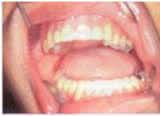 Have you ever had to reduce a dislocated jaw? I’ve done about 3 and it is always tough. Either get in front or behind the patient and above the patient and with gauze over the gloved thumb of each hand, use intra-oral manipulation, which involves pushing down hard on the bottom molars and perhaps adding a slight anterior tilt, to get it in. It is painful and in many cases the patient needs sedation.
Have you ever had to reduce a dislocated jaw? I’ve done about 3 and it is always tough. Either get in front or behind the patient and above the patient and with gauze over the gloved thumb of each hand, use intra-oral manipulation, which involves pushing down hard on the bottom molars and perhaps adding a slight anterior tilt, to get it in. It is painful and in many cases the patient needs sedation.
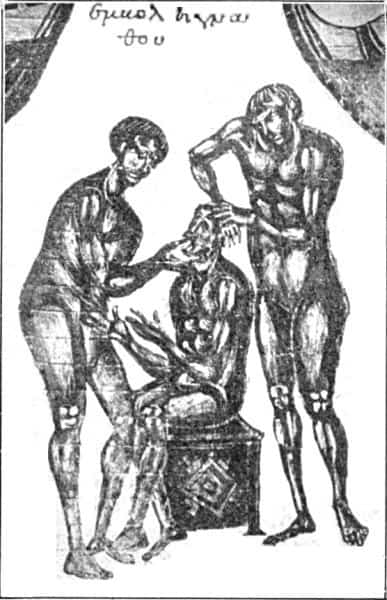
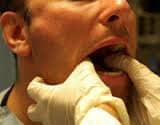
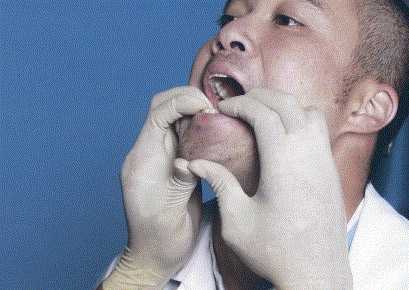
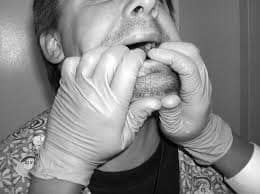
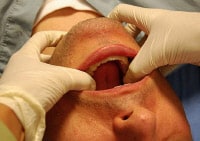
There must be a better way to do this, as all techniques concentrate on some form of manipulation by the physician.
That is until now. This week we look at a new technique from the Journal of Emergency Medicine 2014;47(6):676-681.
There were 31 patients in this study; 97% were reduced successfully, 77% were reduced in less than one minute. There was no sedation required and there were no recurrences.
This procedure was for NON-TRAUMATIC anterior dislocations, or one without a fracture.
Here is how to do it
You need a 5mL or 10mL syringe, depending on the patients size. The syringe is placed in the mouth between the upper and lower molars of the affected side and the patient is asked to gently bite down. They are then asked to gently roll the syringe back and forth. As the molars roll over the syringe, it results in a gliding motion as the mandible slides posteriorly. The condyle moves posteriorly and slips back into its normal anatomical position.
Try it and let me know how it goes.


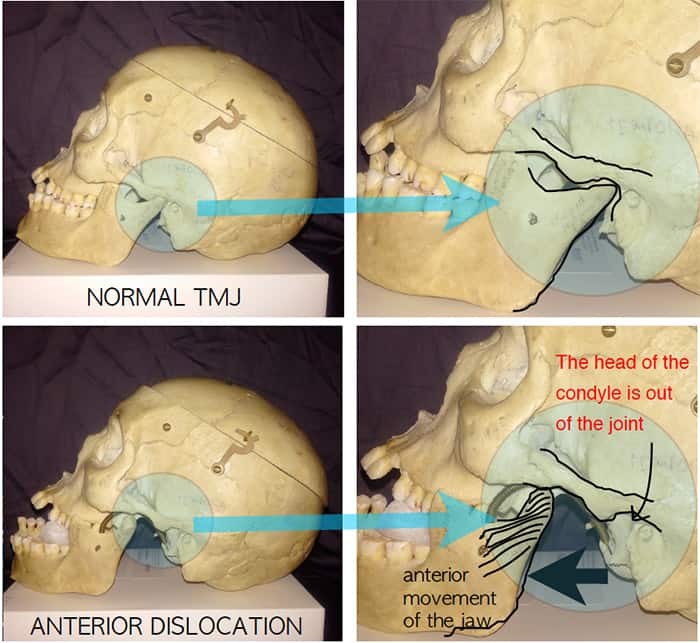
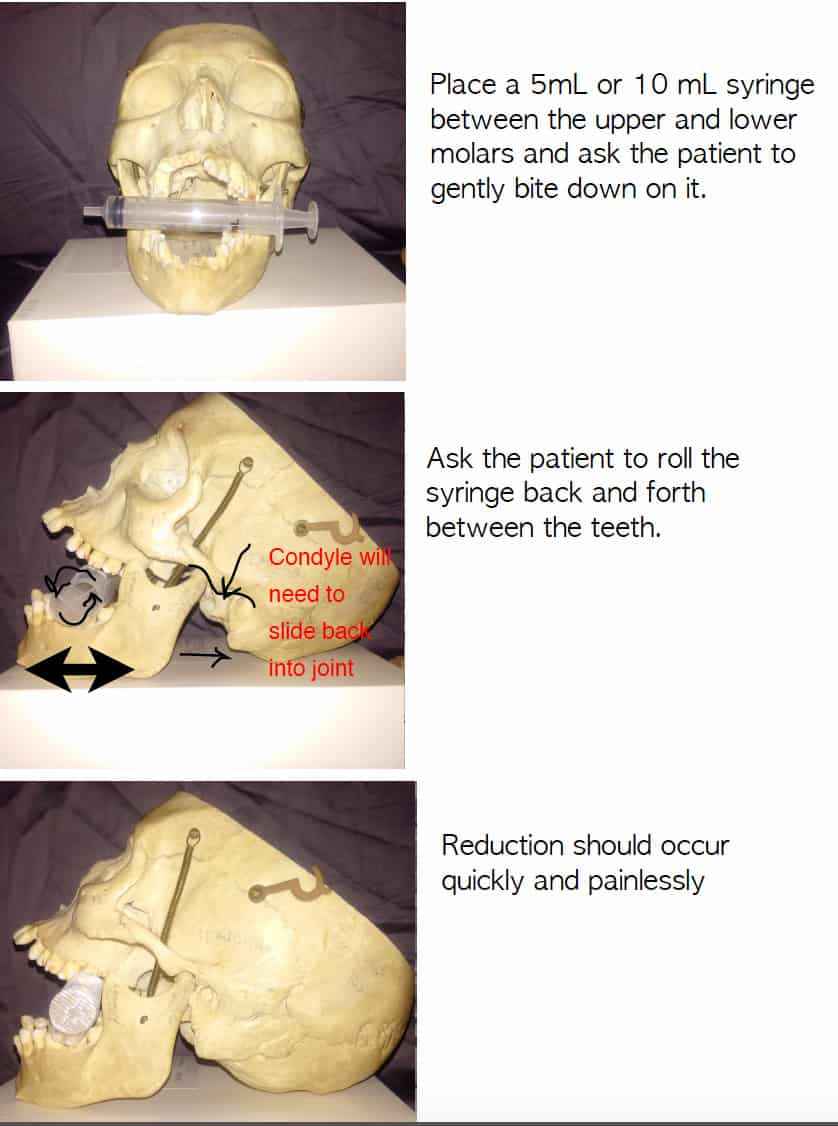







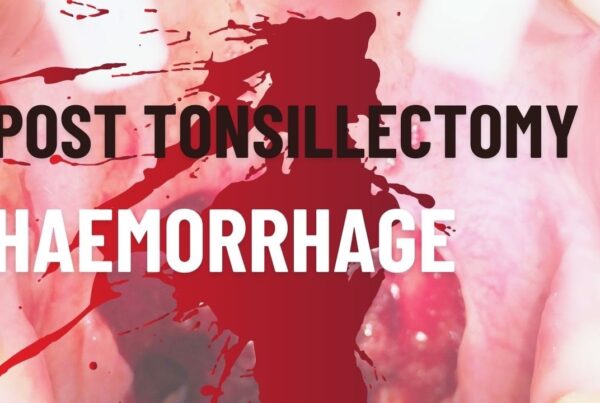

Hi mates, its wonderful paragraph about cultureand entirely defined, keep it up all the time.